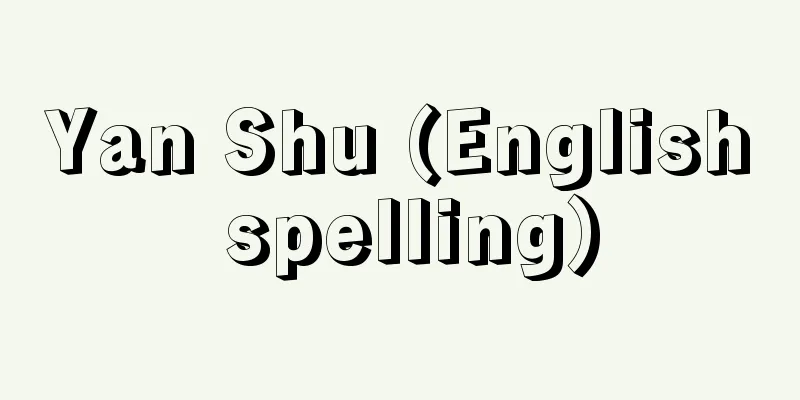Cooperative Society - Gassakusha (English spelling)

|
This is the general term for Chinese cooperatives. It is said that the idea of credit cooperatives was first introduced in 1919 by Xue Xianzhou (1878-1927), a professor at Fudan University, for the purpose of social reform. Before liberation, credit, sales and small manufacturing cooperatives were established all over the mainland, but they did not last long due to war and civil war. During that time, the revolutionary base areas of Mao Zedong and others were surrounded by Japanese and Kuomintang troops, so they had no choice but to develop cooperatives in order to maintain a self-sufficient economy. In particular, mutual aid associations consisting of several households that utilized the traditional agricultural labor exchange system also became the foothold for agricultural collectivization after liberation. After the liberation, these experiences were inherited, and at the same time, against the backdrop of a socialist view that the collective ownership system of the cooperative system was more "socialistic" than private ownership, cooperation (collectivization) was promoted in urban and rural areas, in the fields of production, credit, sales, and purchasing. In particular, agricultural production cooperatives evolved from mutual aid associations to primary cooperatives and then to higher-level cooperatives, becoming larger and more "socialistic." A primary-level cooperative is a group of 10 or at most 20-30 farm households that pools labor, land, and capital while retaining private land ownership, while a higher-level cooperative formed by merging primary-level cooperatives is a relatively large cooperative with around 200-300 households, and is an organization in which the land and large capital are also owned by the cooperatives. However, during the process of the transformation into people's communes in 1958, this also transformed into a larger people's commune. Among them, the former primary cooperatives were reorganized into production teams, and the higher-level cooperatives were reorganized into production battalions. It was around 1978, after the downfall of the Gang of Four (1976), that collective ownership began to be reconsidered in China. Efforts were made to create new cooperatives based on the traditional principles of cooperatives. People's communes were dissolved under the new constitution in 1982, and transformed into township and village enterprises owned and operated by the local administrative governments. In addition to those operated by administrative governments, township and village enterprises also include collectively owned enterprises and jointly operated enterprises, which are new cooperative efforts. There are also supply and sales cooperatives (sales and purchasing cooperatives) that purchase agricultural products from farmers and sell production materials to farmers, credit cooperatives (credit cooperatives) that are the local banks in rural areas, and various small-scale production cooperatives. Of these, supply and sales cooperatives and credit cooperatives played an important role during the people's commune era, but as marketization progressed after the Reform and Opening Up, their role has gradually declined. [Nakakane Kazutsugu] "Reform of China's Rural Cooperatives: The Development Process of Supply and Sale Cooperatives" by Hitoshi Aoyagi (2002, Nihon Keizai Hyoronsha) [References] | | |Source: Shogakukan Encyclopedia Nipponica About Encyclopedia Nipponica Information | Legend |
|
中国の協同組合を一般にこのようによぶ。1919年に社会改良の目的から復旦(ふくたん)大学教授薛仙舟(せつせんしゅう/シュエシエンチョウ)(1878―1927)によって信用協同組合思想が導入されたのが初めといわれる。解放前、信用、販売、小工業の各合作社が大陸各地において創設されたが、戦争と内戦のためもあって長続きしなかった。 その間、毛沢東(もうたくとう/マオツォートン)らの革命根拠地においては、日本軍と国民党軍に包囲されていたので、自給自足経済を維持するため、いやおうなしに合作社を発展させざるをえなかった。なかでも、農業における伝統的な労働力相互交換制度を利用した数戸からなる互助組は、解放以後の農業集団化の足場ともなった。 解放後こうした経験が受け継がれ、同時に、私的所有よりは合作社制度のもつ集団所有制がより「社会主義的」であるとする社会主義観を背景に、都市と農村、生産、信用、販売、購入の各分野で合作化(集団化)が推し進められた。とりわけ農業生産合作社は、互助組から初級合作社へ、さらには高級合作社へと、より大規模に、またより「社会主義的」に進化していった。ここで初級合作社とは、10戸ないしはせいぜい20~30戸からなる農家が、土地私有権を保持したまま労働力、土地、資本をプールして利用するというものであり、それに対して初級合作社を合併してできた高級合作社は200~300戸程度の比較的大型の合作社で、土地や大型の資本も合作社が所有する組織である。しかし1958年の人民公社化の過程で、これもより大規模な人民公社へと移行した。そのなかで、かつての初級合作社は生産隊に、高級合作社は生産大隊に編成された。 中国において集団所有が見直されるようになったのは、「四人組」失脚(1976)以後の1978年ごろからである。従来の協同組合原則に則した新たな合作社への取り組みが始まった。人民公社は、1982年の新憲法で解体され、末端行政政府が所有・経営する郷鎮(ごうちん)企業に変身した。郷鎮企業には、行政政府のもの以外に集団所有企業や共同経営企業があり、それらは新たな合作社の取り組みである。また、農産物を農民から買い付けたり、農民に生産資材を販売したりする供銷(きょうしょう)合作社(販売購入協同組合)、さらに農村における末端の銀行である信用合作社(信用協同組合)、それに各種の小規模な生産合作社などもある。このうち供銷合作社と信用合作社は人民公社化時代には重要な働きをしたが、改革開放以後市場化が進むにつれて、しだいにその役割を低下させてきている。 [中兼和津次] 『青柳斉著『中国農村合作社の改革 供銷社の展開過程』(2002・日本経済評論社)』 [参照項目] | | |出典 小学館 日本大百科全書(ニッポニカ)日本大百科全書(ニッポニカ)について 情報 | 凡例 |
>>: Collaborative medical care - gassakuiryo (English spelling)
Recommend
Nuclear Magnetic Moment - Electromagnetic Moment
This refers to the magnetic moment of an atomic n...
Waltz - Waltz (English spelling)
A dance in three beats at moderate speed, and the...
Gasnier, L.
...Then, "Zigoma" (1911), which had a g...
Kochiyaki
Sancai pottery from the late Ming Dynasty, fired ...
Stavelot
...Paper manufacturing, beer brewing, etc. The mo...
A-class - Ah, right?
…The cross-sectional shape of soil is shown in Fi...
Kania
A port city on the northwest coast of Crete, Greec...
Ishibuchi Dam
Japan's first rockfill dam is located in the ...
dinanderie
…Because brass was not an expensive metal and was...
Trigeminal nerve - Sansashinkei (English spelling)
The fifth pair of cranial nerves, a mixed nerve co...
sleeping bag
…sleeping bag. In English, it is called a sleepin...
Monggholunniuchatobchaan (English: Monggholunniuchatobchaan)
…The oldest historical document written by the Mo...
Foggia - Foggia (English spelling)
The capital of Foggia Province in Puglia, souther...
Ichinohijiri
→Kuuya Source : Heibonsha Encyclopedia About MyPed...
Eho-dana - Eho-dana
〘Noun〙 A Shinto altar dedicated to Toshitokujin (t...









